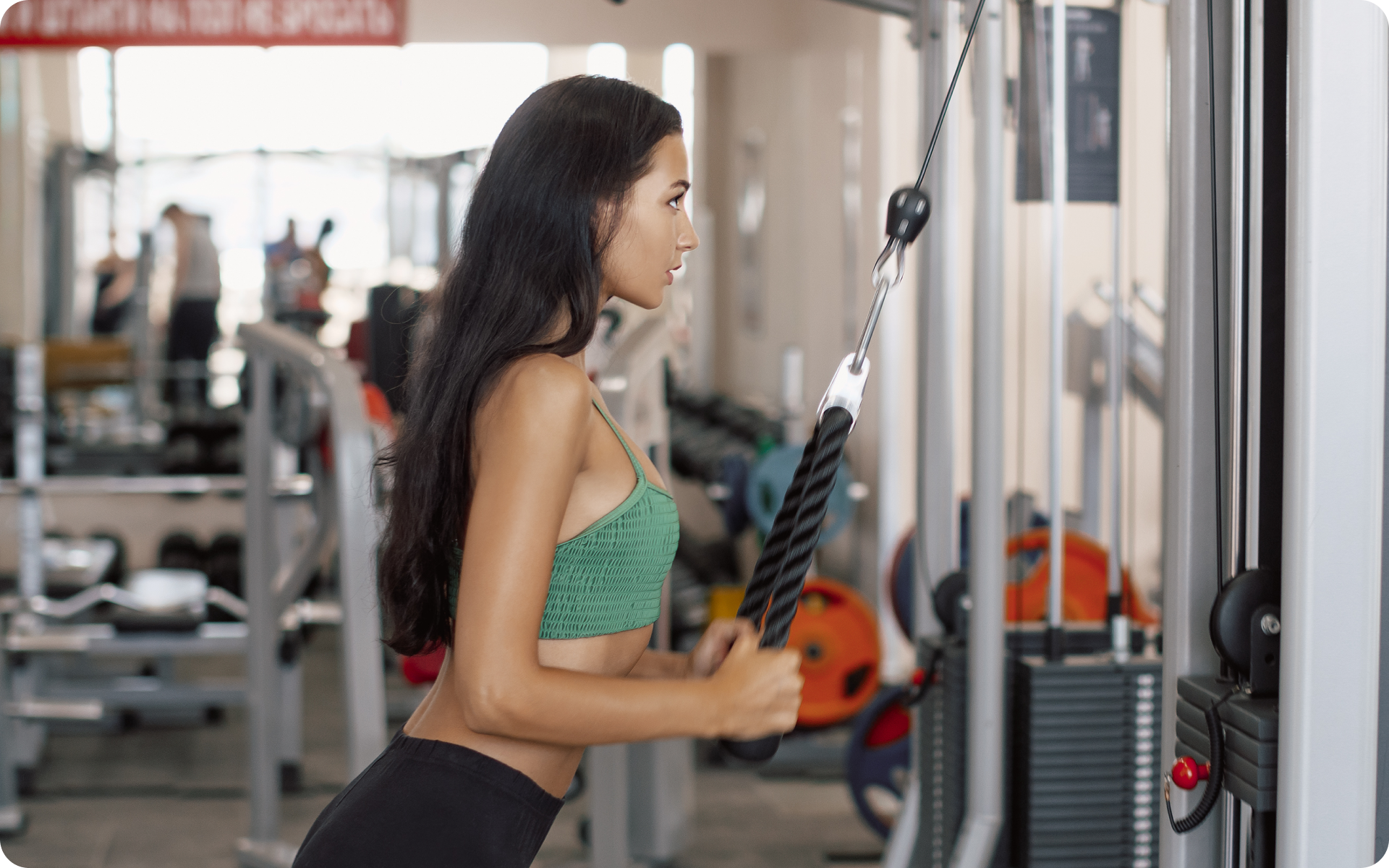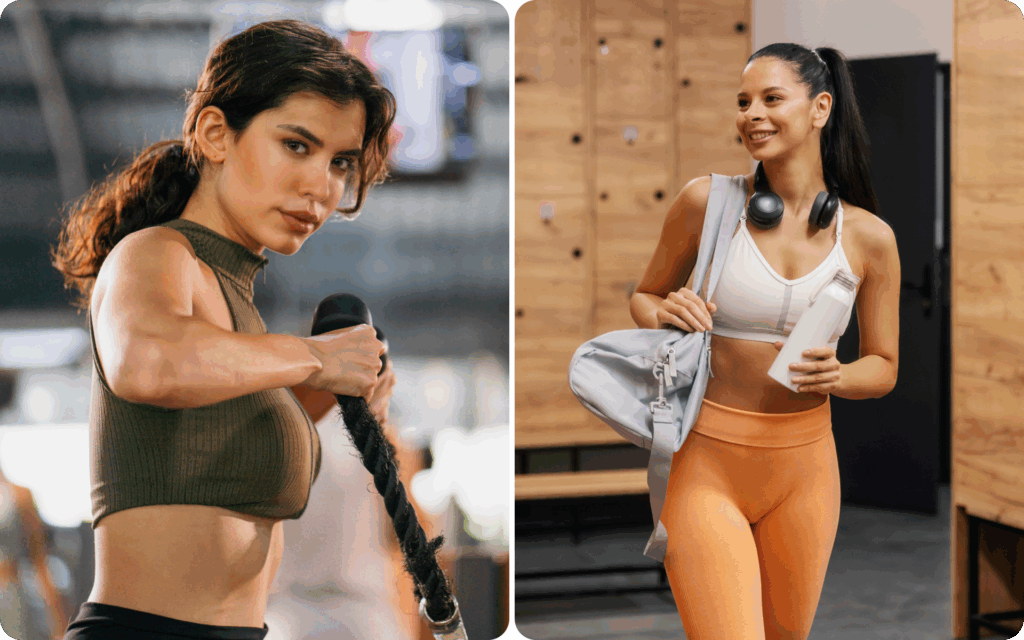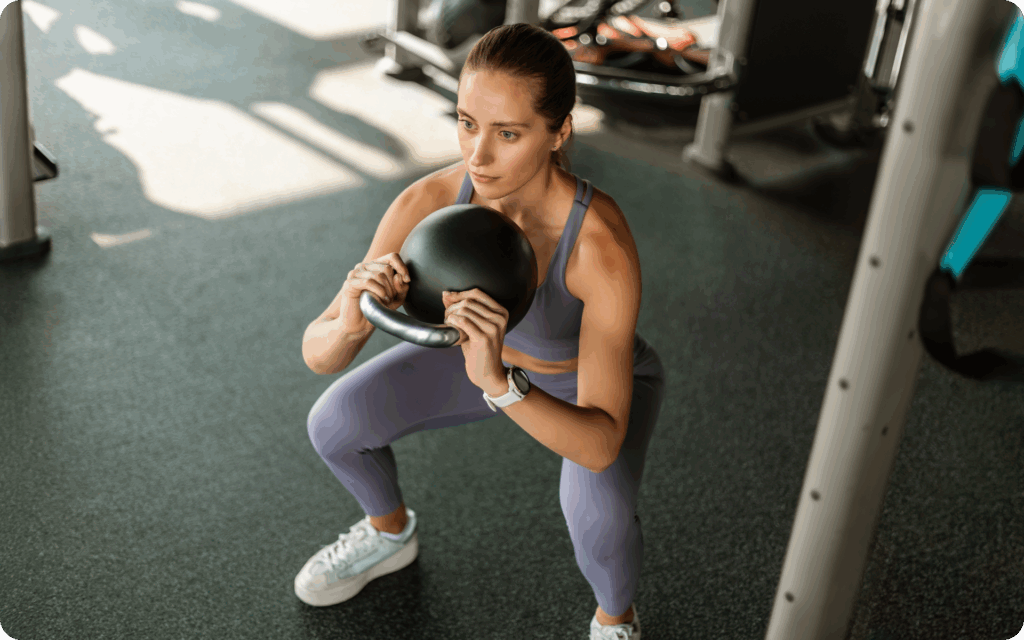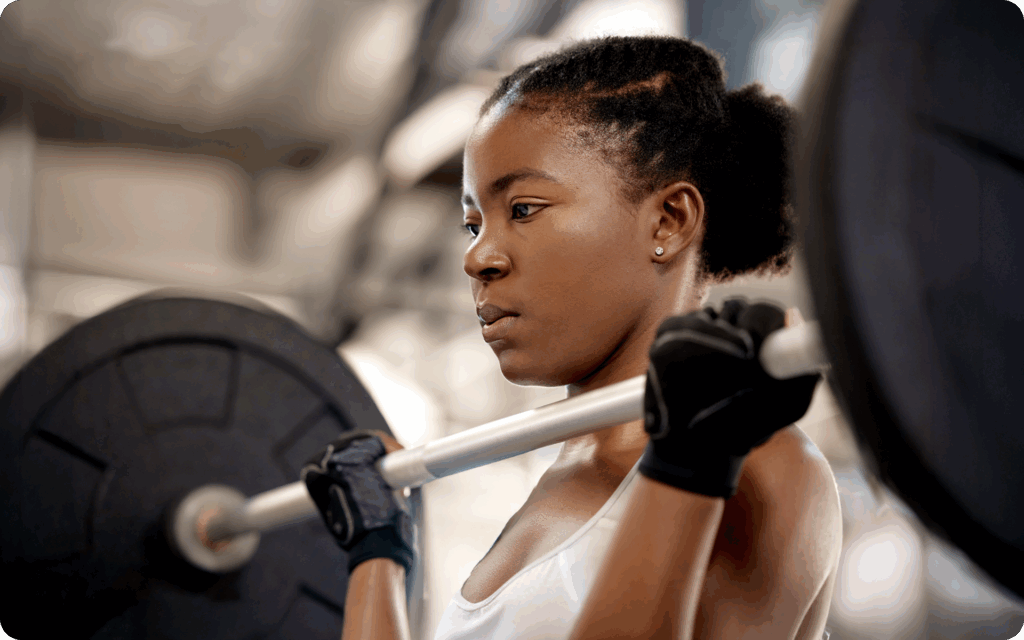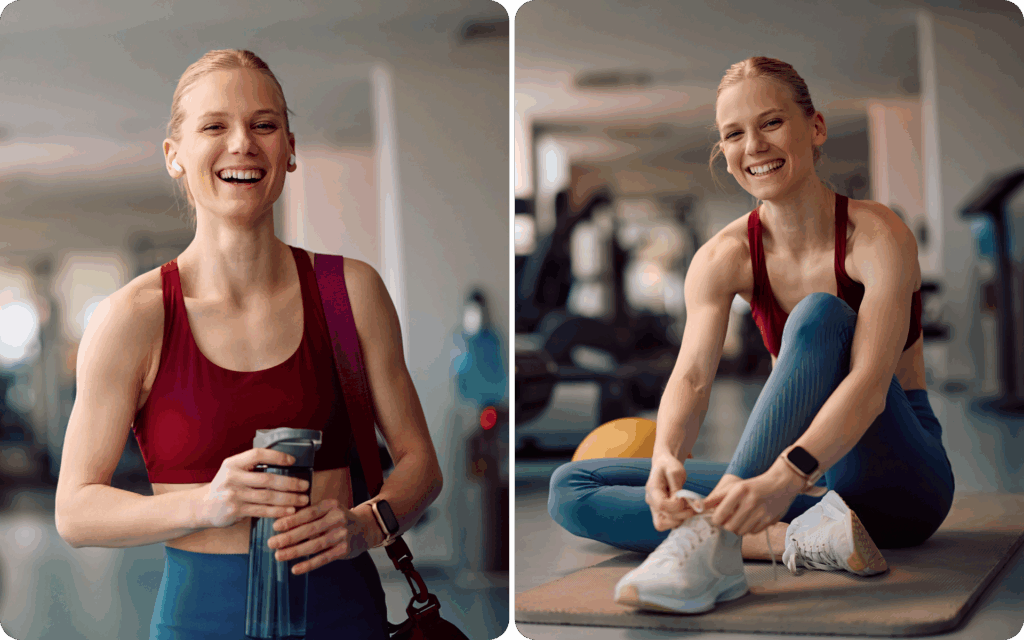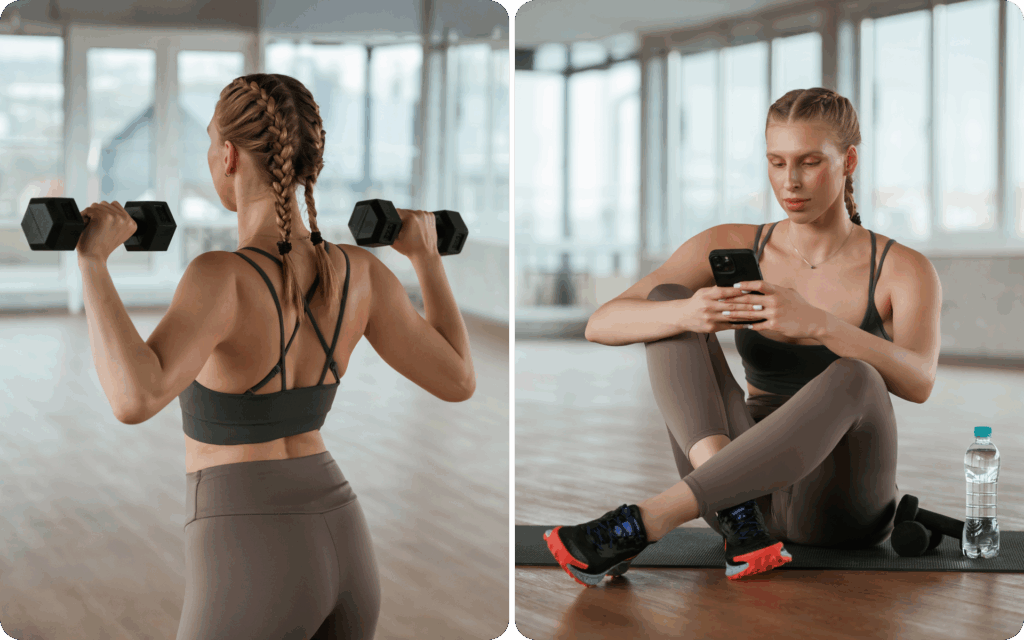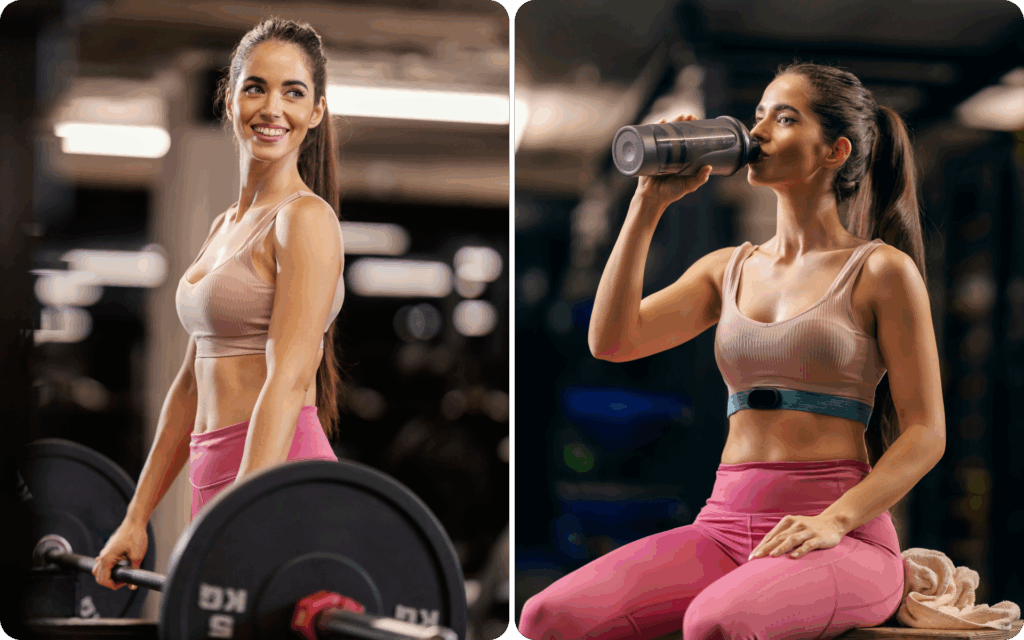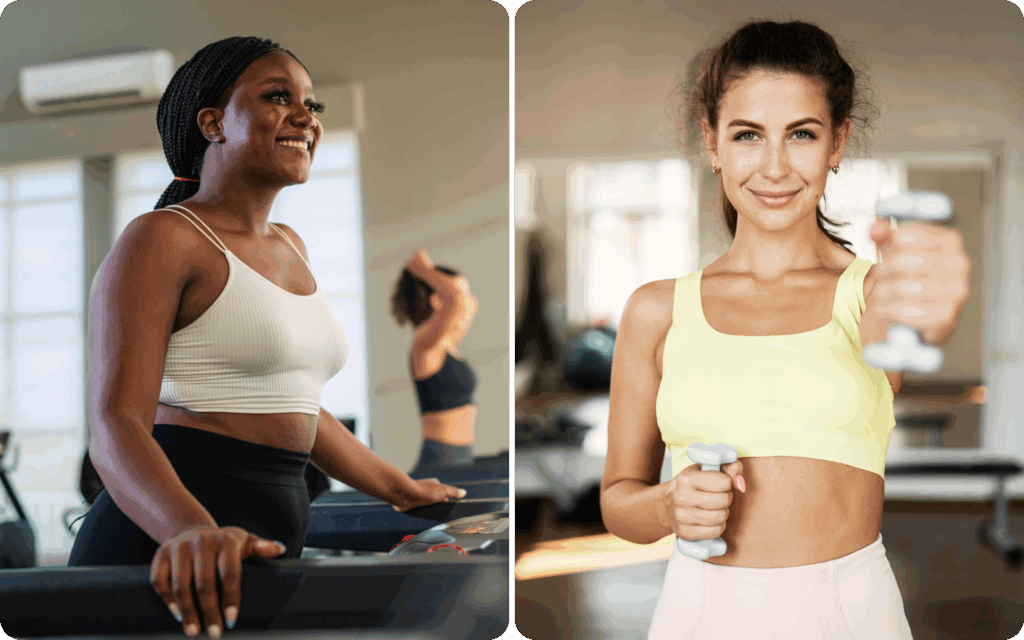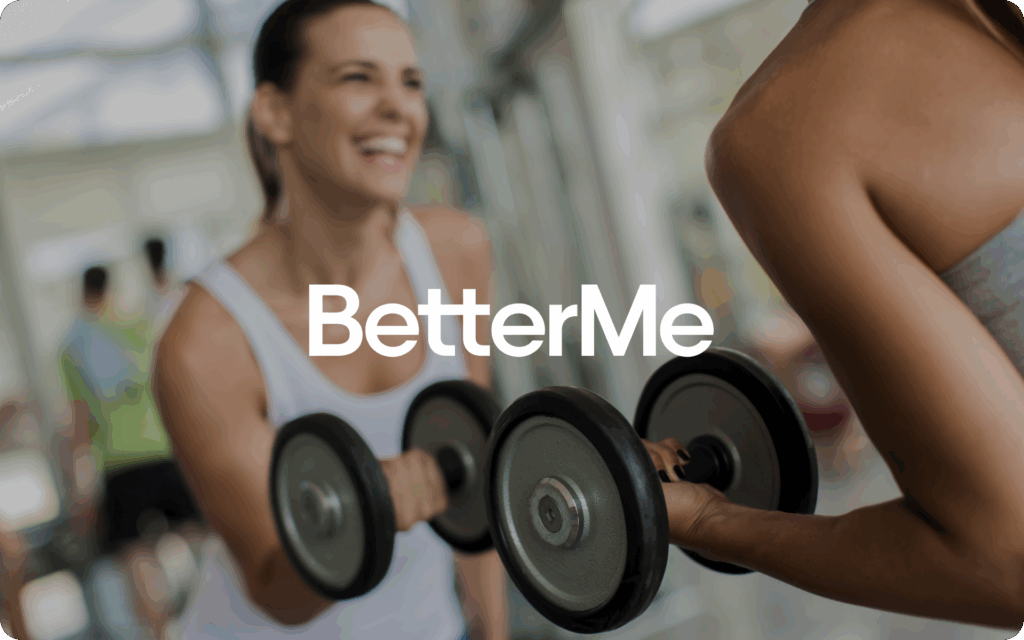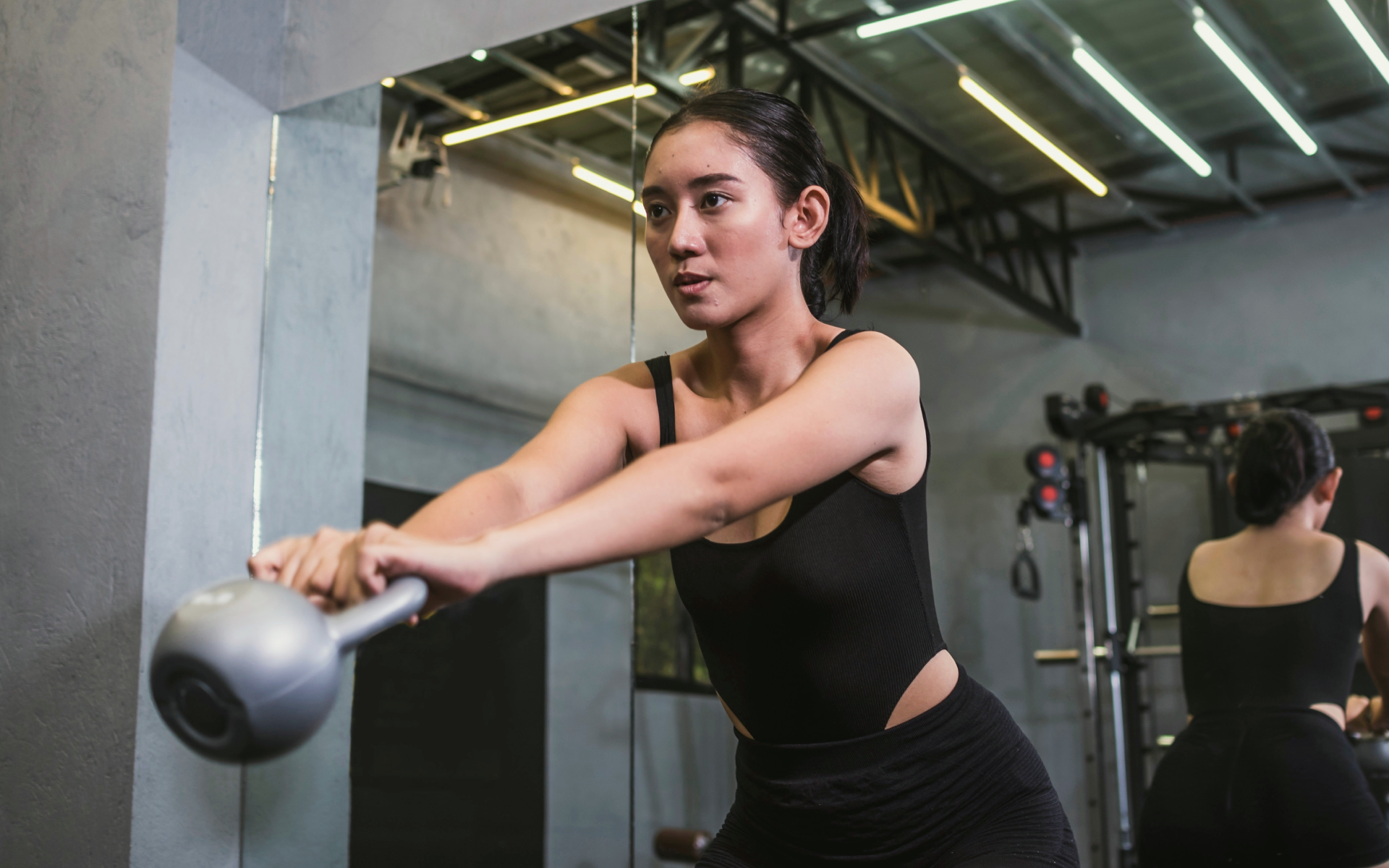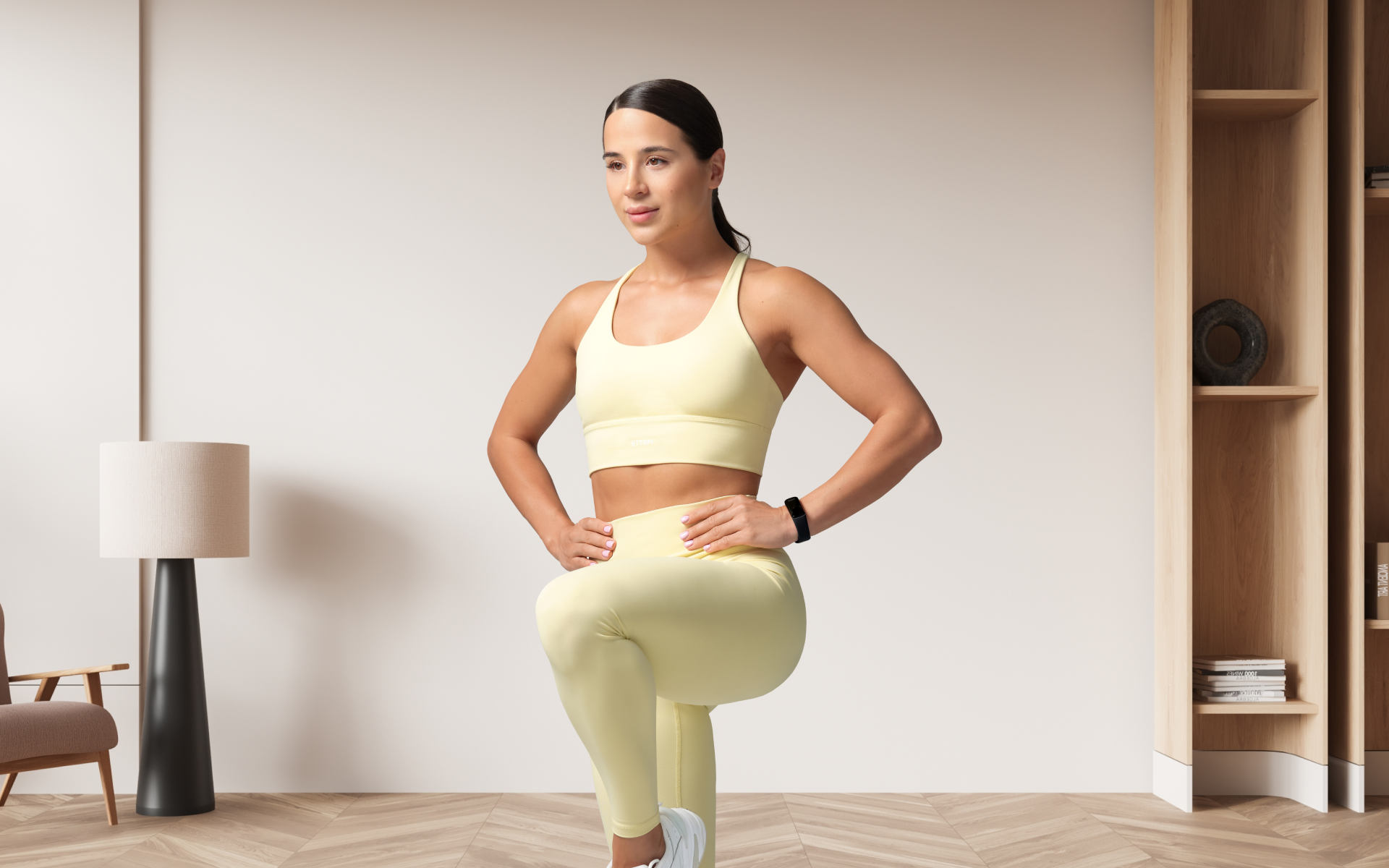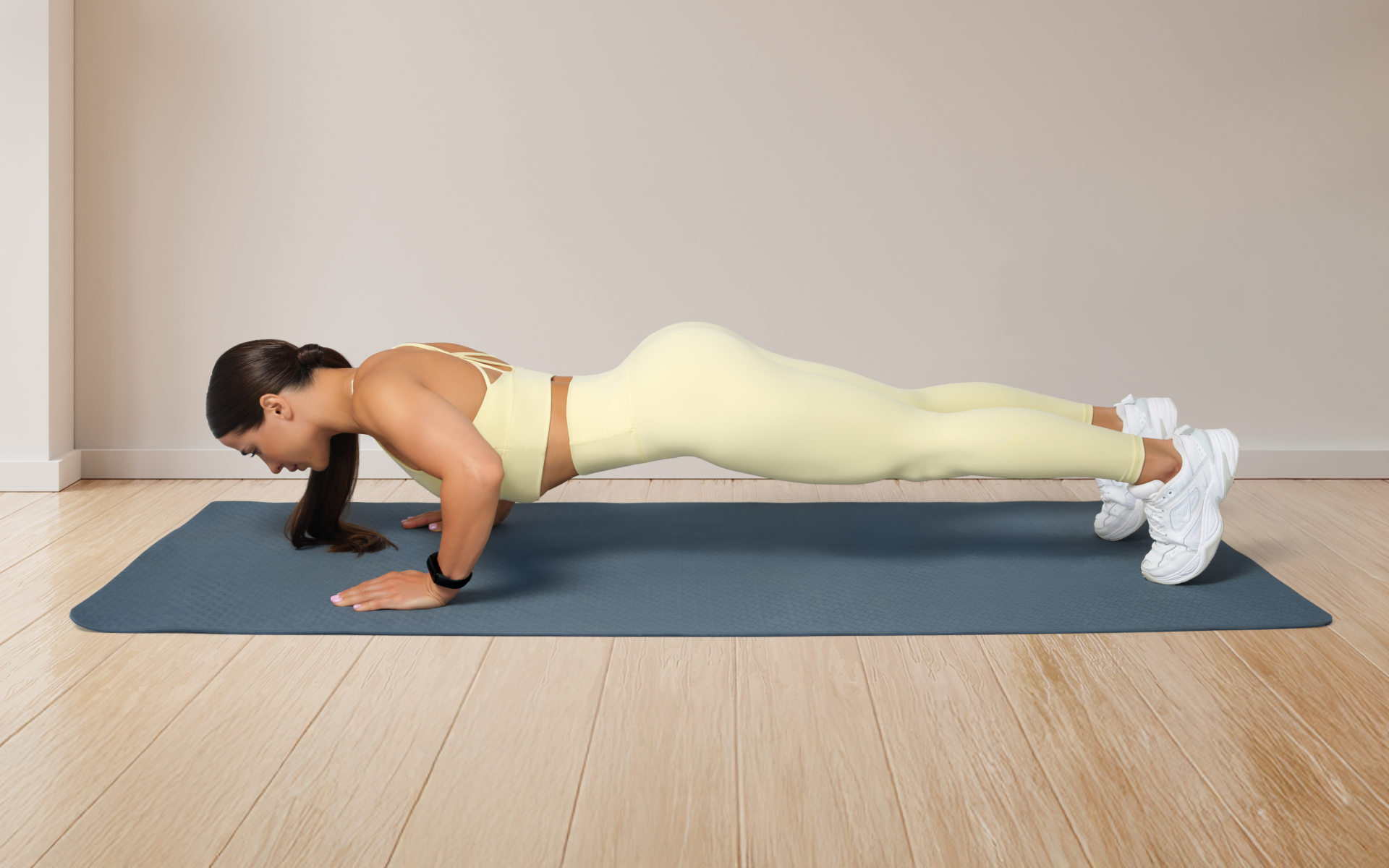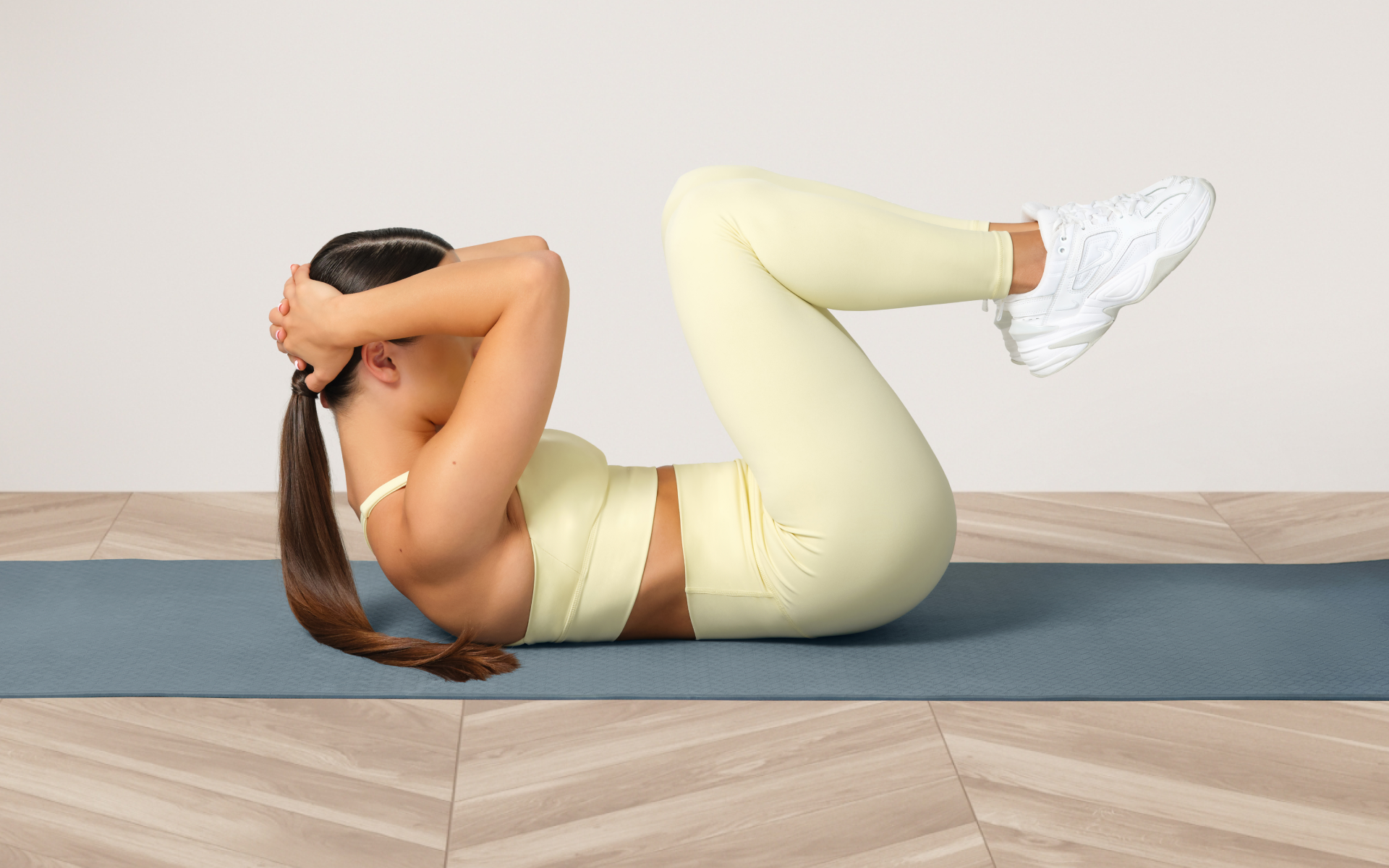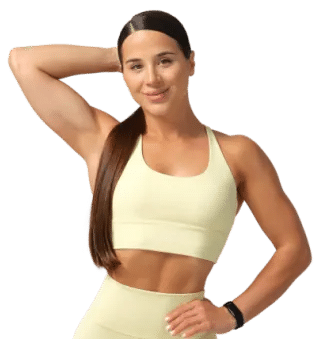In the modern world, the amount of information that’s easily accessible, the low entry point for anyone to publish and promote practically anything, and the takeover of influencers are quite prevalent. This landscape has clouded individual perception, interpretation, and the ability to differentiate who is an expert, as it can be easy for many to pose as experts these days, particularly when some of them may appear fit. Somehow, this sole factor alone instills a false sense of confidence in their own skill, knowledge, and understanding. While seemingly harmless, this can create quite negative connotations for a susceptible or vulnerable audience. Furthermore, some people, through no fault of their own, haven’t learnt or don’t honestly know how or what to look for in order to determine whether someone is qualified or not. And, with the rise of AI, information can be spat out faster than you can finish a thought at times.
So, regardless of where you are in your journey – whether you’re about to embark on your gym/strength training journey for the very first time or you want to get back into it after some time away – this will guide you there and help cut through any confusion or noise to bring clarity. The most important thing is this: you don’t need to know everything to start – you just need a plan that works for you.
This guide is designed to help you focus on what actually matters in your first few weeks and months of strength training. It’s about building confidence, consistency, and progress, without the overwhelm.
What Is the Ultimate Gym Workout Guide for Beginners?
The Beginner’s Guide to Gym Training That Works is a practical and realistic framework to help you ease into strength training, particularly if you’re unsure where to start. It includes full-body workouts, structured progression, and simple movement patterns that lay the foundation for long-term results. Most importantly though, it’s built on proper methods and well-established concepts, not just guesswork (1,2).
The best gym workout guide for beginners is one that’s simple, repeatable, and focused on building strength through foundational movements. It doesn’t need to be fancy. What matters most is learning good technique, training consistently, and establishing a sustainable path to be able to progress (3,4).
A good beginner gym program will include at least two sessions per week, typically both being full-body sessions. It should use the basic foundational movement patterns as the template, which include squat, hinge, push, pull, and carry (or core)(5). If you’re unsure where to start, don’t worry, that’s what this guide is all about.
Before we go any further, one important point to mention is that muscle soreness isn’t a reliable indicator of workout effectiveness. While some mild soreness can occur when you try new exercises, progressive overload, recovery, and strength improvements are better measures of effectiveness than post-workout discomfort. (1,4 ).
Training with a plan improves consistency and results compared to unstructured sessions, particularly during the early stages of gym training (1).
Read more: Gym Workout Plan for Women: The Ultimate Strength and Hypertrophy Guide
Beginner Gym Workout Plan
How to use this plan:
- Sessions per week: 2-3 full-body workouts
- Sets and reps: 2-3 sets of 8-12 reps per exercise
- Rest time: 45-90 seconds between sets
- Focus: Master form before adding weight
- Goal: Build strength, improve mobility, and boost confidence
| Movement pattern | Example exercise (bodyweight) | Example exercise (equipment) | Sets and reps | Rest | Benefits |
|---|---|---|---|---|---|
| Squat | Bodyweight squat | Goblet squat (DB or KB) | 3 x 12 | 45-60s | Builds lower-body strength and supports daily movement |
| Hinge | Glute bridge | Dumbbell Romanian deadlift | 3 x 12 | 45- 60s | Strengthens glutes, hamstrings, lower back, and core |
| Push | Incline push-up | Dumbbell bench press | 3 x 8-12 | 60-90s | Improves chest, shoulder, and tricep strength |
| Pull | Towel row or inverted row | Single-arm dumbbell bent-over row | 3 x 10-12 | 60s | Improves back strength and supports posture |
| Carry/Core | Dead bug | Farmer’s carry (light DBs) | 3 x 20-30s | 30-45s | Enhances core strength and stiffness, increases grip strength (farmer’s carry) |
An optimal beginner gym workout plan includes:
- 2-3 full-body sessions per week.
- Foundational movements: squat, hinge, push, pull, and carry/core.
- 2-3 sets of 8-12 reps per exercise.
- Adequate rest between sets.
This frequency supports early muscle adaptations, improved movement efficiency, and manageable recovery, in addition to the neurological adaptations.
Reasons why BetterMe is a safe bet: a wide range of calorie-blasting workouts, finger-licking recipes, 24/7 support, challenges that’ll keep you on your best game, and that just scratches the surface! Start using our app and watch the magic happen.
Session 1
- Squat: bodyweight squat/goblet squat – 3×12
- Push: incline push-up/DB bench press – 3×10
- Pull: towel row/one-arm DB row – 3×12
- Core: dead bug or farmer’s carry – 3×20s
Session 2
- Hinge: glute bridge/DB RDL – 3×12
- Push: shoulder press/wall push-up – 3×10
- Pull: band row/lat pulldown – 3×12
- Core: bird dog or plank hold – 3×30s
Tip:
Start with 2 full-body sessions per week, gradually progressing to 3 sessions once your technique and recovery improve. Rest for at least 48 hours between strength sessions to support adaptation (4).
Evidence-Based Notes
- 2-3 strength sessions per week provide optimal balance between neuromuscular adaptation and recovery for beginners (1,2).
- Training all five foundational movement patterns promotes balanced muscle development, functional strength, and injury prevention (3,4 ).
- Incorporating pull movements improves shoulder stability and posture, particularly important for beginners and adults over 30 (5,6).
- Rest periods of 45-90 seconds are recommended for beginners to maximize strength while maintaining good form (7).
Read more: 6 Compound Exercises for Women to Build Strength and Transform Their Bodies
Does a Clear Plan Boost Gym Results?
Absolutely. Walking into the gym with a plan not only saves time, it also reduces decision fatigue and builds confidence. A clear structure also helps track your progress, which is one of the most motivating parts of strength training. No more guessing what to do next – you follow your plan, check it off, and improve week to week. Having a clear training plan improves motivation, exercise adherence, and tracking of results – particularly in beginner populations (3). Instead of guessing what to do next, you walk in knowing what to focus on, and progress feels measurable. In addition, a clear plan will ensure that you’re moving in the right direction. It will provide you with the proper landscape to be able to track your progress and monitor results over time. Not having a plan is like just guessing and hoping that whatever you do will eventually miraculously lead you to the exact results you’re after. If you feel you don’t work well when things are incredibly strict or rigid, the good news is that it also doesn’t need to be like that either. Simply, as long as you have an overview and are ticking off some key areas, you can still make noticeable progress.
How Often Should You Train as a Beginner?
The general consensus is that you should start with two strength training sessions per week. This is the minimum recommendation for individuals to maintain strength, muscle mass, bone density, and overall function. Therefore, as a beginner starting a new program, starting with two days per week is best. Once a good, consistent routine has been established, a third day can be added in, but it’s important to start with an achievable amount before you get carried away.
Start with 2-3 sessions per week, particularly in the first 4-6 weeks. This gives your body time to adapt, recover, and avoid burnout. More isn’t always better – consistency matters more than volume at the start.
Once your body adjusts and you’ve built the habit, you can explore higher frequencies such as a 4- or 6-day gym split (see below). However, this can be far down the track, and it isn’t a necessity. Even some advanced or highly trained individuals don’t do that many sessions in the gym.
Most beginners benefit from training 2-3 days per week. This approach allows your body to recover, reduce soreness, and build consistency before you add more volume (1,4). If you’re new, quality and consistency matter more than quantity.
What Moves Should Every Starter Gym Workout Routine Have?
Any good program is made up of some key foundations. These are the pillars for developing strength, competency, range of motion, and capacity. Learning and developing these foundational movement patterns will pay dividends in the long term, establishing a strong base or foundation for you to then be able to move and expand. Think of it like building a house – you want to ensure it’s built with a strong base. Otherwise, what’s the point of adding all the fancy extras if one small gust of wind will blow it all away?
At a minimum, you should include:
- Squat (goblet squat, step-up)
- Hinge (glute bridge, dumbbell deadlift)
- Push (incline push-up, dumbbell press)
- Pull (resistance band row, lat pull-down)
- Carry/Core (farmer’s carry, deadbug, bird dog)
These movements support total-body strength, improve functional mobility, and carry over into everyday tasks (5).
BetterMe: Health Coaching app helps you achieve your body goals with ease and efficiency by helping to choose proper meal plans and effective workouts. Start using our app and you will see good results in a short time.
Which Training Split Builds the Most Muscle?
As a beginner, a full-body routine performed twice per week will be a simple, effective starting point. Over time, this routine can be adapted to follow a more traditional upper-body and lower-body split, or it could be three sessions per week, with one upper-body focus, one lower-body focus, and one full-body focus. There are many options and different methods you can take. Research has suggested that total weekly training volume, not the exact split, drives muscle growth. Whether you follow a full-body, upper/lower, or push-pull-legs approach, consistency and progressive overload are key (5,6). In addition, it will be the routine with which you can be most consistent. So, the answer may actually be the structure you can be consistent with over time, without skipping sessions, compromising sessions, and so on. It’s recommended to start with two full-body sessions per week, particularly as a beginner. This allows for frequent practice of core lifts and better total weekly volume per muscle group, which supports muscle growth (6). More advanced lifters may move to an upper/lower or push-pull-leg split, although when it comes to building the ‘most’ muscle, there are many factors to consider, and many ways to go about it. It’s not simply about choosing the best program, but also ensuring that all other aspects are consistently met. Read more in this 6-day gym workout schedule here.
How to Balance Strength and Cardio Weekly
Start with strength as your foundation, then incorporate cardio to support heart health and recovery. A good starting balance might be:
- 2-3 strength sessions/week
- 1-2 light cardio or mobility sessions/week (e.g. walking, cycling, swimming, jogging, yoga)
As you build endurance, you can increase the frequency or intensity, but you don’t need to “burn out” to see results, especially early on.
A good weekly split might include:
- 2-3 strength sessions
- 1-2 light/moderate cardio sessions (walking, biking, circuits)
Balancing both improves cardiovascular health without interfering with strength adaptations, particularly when scheduled on separate or alternating days (7).
Historically, there’s been a myth that cardio “kills” gym gains, but research has shown that this isn’t entirely true. Building a solid cardiovascular foundation can enhance recovery, improve work capacity, and help you perform better both during strength sessions and between training days, as long as it’s programmed appropriately. What should be noted is that performing high-intensity cardio immediately before strength sessions can temporarily reduce your lifting performance (7).
What’s the Role of Rest Days for Gym Workout Results?
Rest days allow for muscle recovery, nervous system reset, and injury prevention. Without recovery, progress slows and fatigue increases. Research has shown that beginners need 48 hours of rest between sessions targeting the same muscle group (8).
How to Build a Gym Workout Routine with Minimal Equipment
A gym workout routine can be easily established and adapted to suit minimal space, equipment availability, and individual fitness levels. By focusing on foundational movement patterns and progressive overload, you can build strength, improve mobility, and achieve sustainable results over time.
You can start with bodyweight exercises, resistance bands, dumbbells, or kettlebells. Of course, bodyweight exercises don’t require any equipment at all, which makes them an accessible entry point that doesn’t require any financial cost. Resistance bands can usually be relatively inexpensive and versatile, which makes them another cost-effective option. Free weights such as dumbbells and kettlebells can vary in pricing. You may be able to find some good deals, but if they seem too expensive or beyond your budget, there are many options you can do without. There are also many free community options, such as open space gym/workouts in parks (9).
Movements such as goblet squats, rows, push-ups, hip hinges, and carries can all be done with minimal equipment and still produce strength gains, particularly in beginners (9).
For ideas without equipment, to maximise just your own bodyweight, you can read more here: home gym workout plan.
How Does Recovery Impact Gym Workout Progress?
Recovery supports tissue repair, reduces inflammation, and restores energy. Without adequate recovery, strength gains plateau and injury risk rises. Sleep, nutrition, hydration, and rest days all influence how well your body adapts to training (10).
Key recovery pillars:
- Sleep (7-9 hours)
- Adequate nutrition, including meal timing and macronutrient and micronutrient intake
- Stress management
- Rest days and movement variety
Recovery affects everything from muscle growth to energy levels and motivation. Poor recovery = slower progress, higher injury risk, and more fatigue. You don’t need to do more – you need to recover better and make sure the overall weekly load is manageable (1, 4, 6, 8).
Eat a light, carbohydrate-rich snack or meal 1-3 hours before training to fuel your session. After your workout, aim for a balanced meal with both protein and carbohydrates within 1-2 hours to support muscle repair, recovery, and replenish energy stores effectively (11). Yes, the workout structure can stay the same. What changes is your nutrition – fat loss requires a calorie deficit, while muscle gain needs a slight surplus or maintenance (12). Most beginners feel stronger and more energized within 2-4 weeks. Visible changes often appear in 6-12 weeks, depending on consistency and recovery habits (13). Yes, one hour is enough for a complete workout session. A well-structured session can be completed in less than one hour – approximately 45-60 minutes is adequate, and if you’re a beginner, 30 minutes can suffice too.Frequently Asked Questions
What should you eat before and after gym workouts?
Can you follow the same gym workout guide for fat loss and muscle gain?
How soon will results show with consistent effort?
Is one hour enough for a complete workout session?
The Bottom Line
The gym can feel intimidating, but finding your feet by spending the time to learn the basics can give you the best possible starting point to confidently navigate the gym environment and walk into any centre with the self-belief that you belong there, because you do. And everyone should have the basic feeling of that.
You should also remember that the gym isn’t the only place where you can work out. If you have space at home, as we’ve highlighted, there are many options for you to work with. From simply using your own bodyweight to adding a resistance band (or a few), or incorporating free weights such as dumbbells or kettlebells, the options are endless.
To achieve long-term success, the age-old saying of “slow and steady wins the race” really does ring true. There are significant benefits in taking the time to develop proper technique thoroughly and ensuring you can move through a full range of motion before you attempt to load up and lift super heavy. This will allow you to maintain your overall workload and move through pain-free, injury-free, and continue to strengthen your bones, muscle tissue, and tendons. The benefits of regular weight training are vast, and while there can be many competing arguments and programs, what matters the most is that you find a rhythm that you enjoy.
DISCLAIMER:
This article is intended for general informational purposes only and does not serve to address individual circumstances. It is not a substitute for professional advice or help and should not be relied on for making any kind of decision-making. Any action taken as a direct or indirect result of the information in this article is entirely at your own risk and is your sole responsibility.
BetterMe, its content staff, and its medical advisors accept no responsibility for inaccuracies, errors, misstatements, inconsistencies, or omissions and specifically disclaim any liability, loss or risk, personal, professional or otherwise, which may be incurred as a consequence, directly or indirectly, of the use and/or application of any content.
You should always seek the advice of your physician or other qualified health provider with any questions you may have regarding a medical condition or your specific situation. Never disregard professional medical advice or delay seeking it because of BetterMe content. If you suspect or think you may have a medical emergency, call your doctor.
SOURCES:
- Effect of Resistance Training Frequency on Gains in Muscular Strength: A Systematic Review and Meta-Analysis (2018, nih.gov)
- Progression Models in Resistance Training for Healthy Adults (2009, lww.com)
- Key Factors Associated with Adherence to Physical Exercise in Patients with Chronic Diseases and Older Adults: An Umbrella Review (2021, nih.gov)
- Effects of Resistance Training Frequency on Measures of Muscle Hypertrophy: A Systematic Review and Meta-Analysis (2016, nih.gov)
- The Basic Movement Patterns (2025, scienceforsport.com)
- Dose-response relationship between weekly resistance training volume and increases in muscle mass: A systematic review and meta-analysis (2017, nih,gov)
- Concurrent Strength and Endurance Training: A Systematic Review and Meta-Analysis on the Impact of Sex and Training Status (2023, nih.gov)
- The Importance of Recovery in Resistance Training Microcycle Construction (2024, nih.gov)
- Resistance Exercise Minimal Dose Strategies for Increasing Muscle Strength in the General Population: an Overview (2024, nih.gov)
- The effects of nutrient timing on training adaptations in resistance-trained females (2023, sciencedirect.com)
- Effects of Protein Supplementation on Performance and Recovery in Resistance and Endurance Training (2018, nih.gov)
- Exercise, energy balance and body composition (2018, nih.gov)
- The time course of different neuromuscular adaptations to short-term downhill running training and their specific relationships with strength gains (2022, nih.gov)
- Physical Activity (2022, who.int)
